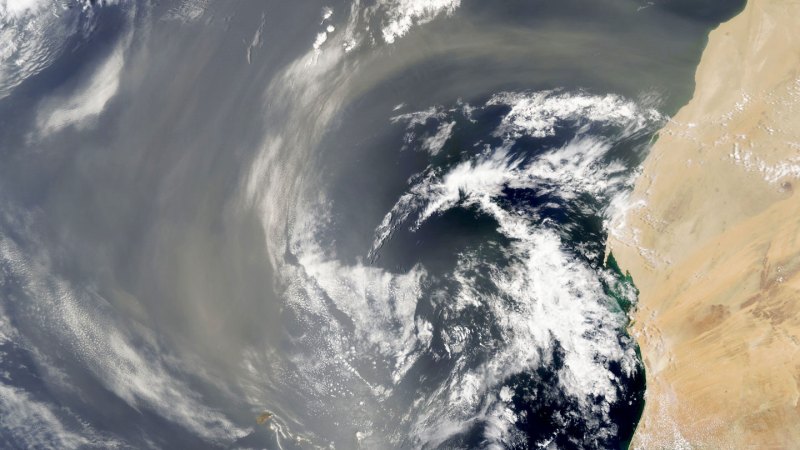As dust from the Sahara blows thousands of kilometers across the Atlantic Ocean, it becomes progressively more nutritious for marine microbes, a new study suggests.
Chemical reactions in the atmosphere chew on iron minerals in the dust, making them more water soluble and creating a crucial nutrient source for the iron-starved seas, researchers report September 20 in Frontiers in Marine Science.
Dust clouds settling on the Atlantic can spawn phytoplankton blooms that support marine ecosystems, says Timothy Lyons, a biogeochemist at the University of California, Riverside. “Iron is incredibly important for life,” he says. Phytoplankton require it to convert carbon dioxide into sugars during photosynthesis.
By further studying dust transport and chemical reactions in the atmosphere, scientists could better understand why parts of the oceans are biological hot spots for phytoplankton and fish.
Over 240 million metric tons of Saharan dust blows over the Atlantic Ocean each year. On Bermuda, the Bahamas and other islands, it turns soils red. But much of it settles on the ocean, providing a major source of iron to areas that are too far from land to receive it from rivers.
Lyons and marine geologist Jeremy Owens, then at UC Riverside too, set out to answer a different dust question: Had the types of dust settling on the Atlantic changed over the past 120,000 years? They analyzed dust-derived minerals in four cores plucked from the muddy seafloor — two in the eastern Atlantic near Africa, and two from farther west near North America.
What they found prompted a different line of inquiry.
In dust and soils around the world, roughly 40 percent of iron is ordinarily present within “reactive” minerals such as pyrite or carbonates. This kind of iron can be decomposed by weak acids and potentially used by life. In the core samples from the bottom of the Atlantic, only about 9 percent of iron in the dust minerals sampled from farther west was made up of reactive iron minerals, compared with about 18 percent in dust minerals taken from closer to Africa. That, says Lyons, was “the big surprise.”
He and Owens, now at Florida State University in Tallahassee, concluded that during the dust’s several-day transatlantic flight, more and more of its reactive iron was altered — attacked by acids and ultraviolet radiation, which pried apart the minerals.
“There are photochemical transformations that tend to make the iron more soluble” in water, says Lyons. As that modified iron later settles into the ocean, it dissolves — and is devoured by phytoplankton. The only reactive iron that makes it to the seafloor is the stuff that wasn’t altered during air transport, and wasn’t later gobbled up. Their results suggest that the farther the desert dust flies, the less of that iron is left.
By spawning phytoplankton blooms, dust-derived iron may also nourish small fish and other animals that graze on plankton, as well as the predators that eat the grazers. A recent study suggested that Atlantic skipjack tuna, an important commercial fish, are attracted to areas where Saharan dust has settled.
The new results are plausible because previous studies have shown that iron minerals react in the atmosphere, says Natalie Mahowald, an atmospheric scientist who studies dust at Cornell University. Their conclusion “goes along with what I thought was happening,” she says.
But she points out that Saharan dust isn’t the only possible source of that iron: The samples came from far enough north in the Atlantic that some of their iron could have come from smoke, from wildfires in North America over the past 120,000 years, she says.
Pinpointing a source of dust buried deep in the seafloor can be challenging. But Owens and Lyons attempted to identify the dust’s fingerprint by measuring the ratios of iron to aluminum and the ratio of light iron atoms to heavy iron atoms in their samples. Both measurements were roughly consistent with the kind of dust that comes from the Sahara, they found. It might be possible, in the future, to analyze sediment from more sites in the Atlantic, providing a clearer picture of how dust has blown across the ocean and changed chemically.


